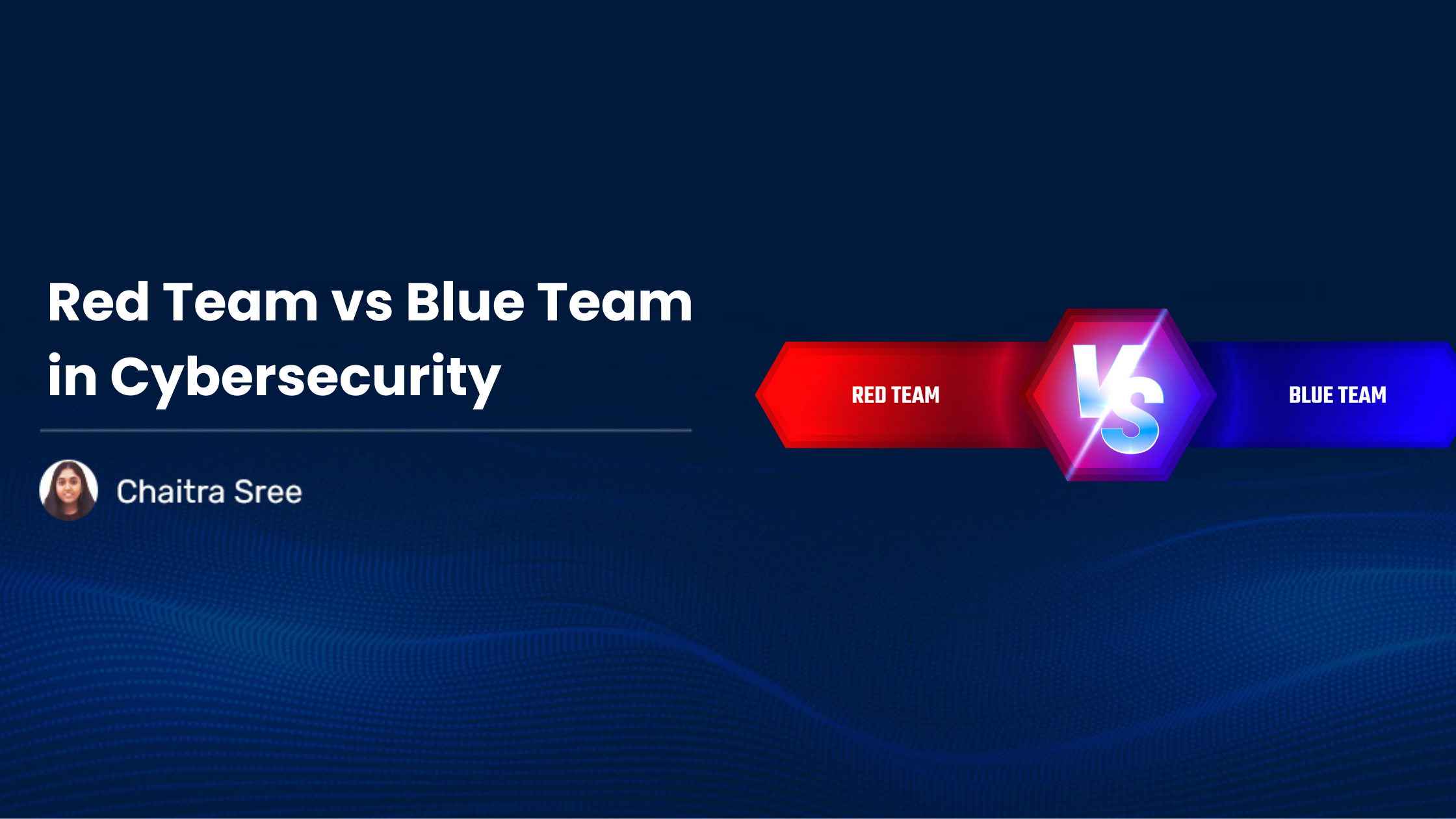In the ever-evolving battlefield of cybersecurity, organizations adopt military-inspired strategies to test, strengthen, and evolve their defenses. Two key players dominate this simulated war zone: the Red Team and the Blue Team.
If you’ve ever Googled “Red Team vs Blue Team”, chances are you’re trying to understand what each team does, how they differ, and how they work together to protect organizations from cyber threats.
In this blog, we break it down clearly and explain why this model plays a critical role in strengthening cybersecurity defenses.
What is a Red Team?
The Red Team represents the attacker.
Their role is to simulate real-world cyberattacks from phishing and malware deployment to lateral movement across systems, all in an effort to find and exploit vulnerabilities.
Think of them as ethical hackers with a mission: expose the cracks before real attackers do.
Key Functions of a Red Team:
- Conduct penetration testing and advanced persistent threat (APT) simulations
- Exploit weak spots in network, application, or human defenses
- Evade detection tools and traditional security controls
- Mimic tactics, techniques, and procedures (TTPs) of real-world threat actors
- Deliver reports on attack paths and successful exploits
They don’t follow rules. In fact, their job is to break the rules to reveal how an attacker might infiltrate an organization.
What is a Blue Team?
The Blue Team is the defender.
They are responsible for maintaining security, monitoring systems, and responding to threats. While the Red Team pokes holes, the Blue Team patches them and tightens defenses.
Core Responsibilities of a Blue Team:
- Monitor systems using SIEM tools, intrusion detection systems (IDS), and endpoint monitoring
- Respond to simulated attacks in real time
- Strengthen security controls based on Red Team feedback
- Conduct log analysis, threat hunting, and incident response
- Implement proactive defense strategies like patching, segmentation, and user training
They may operate quietly, but they ensure that critical systems stay protected and recover quickly from breaches.
Why Red Team vs Blue Team Exercises Matter
The simulated battle between Red and Blue is not just for sport; it’s a critical feedback loop. These exercises:
- Reveal blind spots and misconfigurations
- Test incident response playbooks
- Train security teams in real-world conditions
- Build collaboration between offensive and defensive teams
- Strengthen the overall cybersecurity posture of an organization
Enter the Purple Team: Collaboration over Combat
Many modern organizations are evolving toward a Purple Team model, a collaborative approach in which red and blue teams share insights continuously. Instead of operating in silos, they work together to improve attack detection and defense readiness.
The goal? Maximize learning and minimize exposure by blending offense and defense into a cohesive security strategy.
Conclusion
Understanding the Red Team vs Blue Team dynamic is crucial for any organization serious about cybersecurity. It’s not just a game of hackers vs defenders, it’s a strategic exercise in resilience.
As cyber threats grow more sophisticated, so must our approach to defending against them. Whether you’re building out a security program or training your team, adopting this mindset can give you the edge you need.
Want to improve your defenses? Start by asking yourself: Have you tested your security the way a real attacker would?

